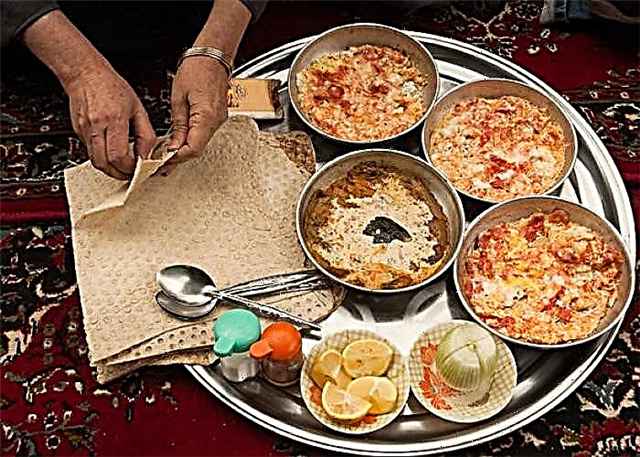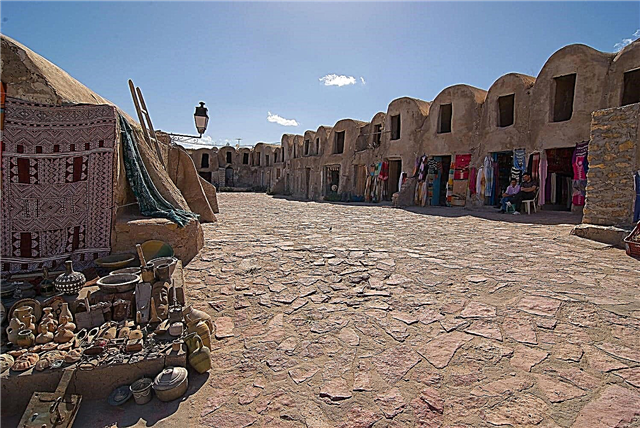Until 1945, the Kaliningrad region belonged to the territory of Germany. The region has no land connection with the rest of the country. A special visa regime is used to cross the border. The westernmost point of the Russian Federation is located on the Baltic Spit.
The cities of the region received new names so that they were connected with Prussia as little as possible. Some important architectural objects were damaged or lost during the Second World War. However, the German heritage still forms the basis of the exclave's attractions. First of all, this applies to architectural structures and monuments. Therefore, not only Kaliningrad and other large cities are remarkable for tourists, but also settlements of a more modest size.
The largest cities in the Kaliningrad region
List of the largest cities in terms of population in the region.
Kaliningrad
The capital of the region. The city was founded in 1255. In the past it was called Königsberg. Together with the adjacent region, it became part of Russia after World War II. There are several museums, including the Amber Museum. Due to the bombing, part of the architectural heritage has disappeared. Only a few have been restored, for example, the building of the stock exchange and the cathedral. The grave of the philosopher Kant is located in Kaliningrad.
Population - 493,256 people (2021).

Don't Miss: 45 Top Attractions in Kaliningrad
Sovetsk
The former name is Tilsit. The city lives at the expense of industrial enterprises and serves as a transport hub. However, the visa regime with the EU countries hinders in terms of logistics. A border bridge, named after Queen Louise, has been thrown across the Neman River. The main attractions: the statue of a knight on the facade of the building, the house of Müller-Stahl, striking in appearance and dimensions, the ruins of the castle.
Population - 39 thousand people.

Chernyakhovsk
Until 1946 it was called Insterburg. The current name is given by the name of the Soviet military leader. The city stands at the confluence of the Instruch and Angrapa rivers. In the vicinity are the ruins of the Georgenburg knight's castle. Important religious sites are the Orthodox Church of St. Michael, which was built as Protestant, and the Catholic Church of St. Bruno.
Population - 36 thousand people.

Baltiysk
The westernmost city in Russia is located on the Baltic Spit. Until 1946, Baltiysk was called Pillau. The largest naval base is located here. For some time after the war, tourists were prohibited from entering here. Now this is no problem. Especially many guests are attracted by the holiday in honor of the Day of the Navy. Excursions to natural and historical sights have been developed.
Population - 33 thousand people.

Gusev
In the past - Gumbinnen. Divided into two parts by the Pissa River. The right bank is called the Old Town, the left bank is called the New. They are connected by several bridges, including one pedestrian. Gusev kept the European layout. In recent years, modern or restored sights have been actively opening: the Bayonet Attack monument, the Mint Garden, the Cathedral of All Saints.
More populated - 28 thousand people.

Light coloured
The youngest city in the region. Serves as an industrial satellite of Kaliningrad. It stands on the northern coast of the shipping canal and was formerly called Zimmerbude. Attractions: two large Orthodox churches, the Church of the Holy Apostles Paul and Gleb, the building of the House of Culture, military monuments and a memorial in honor of the liquidators of the consequences of the Chernobyl accident.
Population - 22 thousand people.

Guryevsk
The former name is Neuhausen. Since it is located only 7 from Kaliningrad, it is considered its satellite city. In Guryevsk, there are streets with new buildings and those that have preserved the German style. The castle built in XIII has also survived, but its appearance has been somewhat changed since our time. Park areas have been laid out, and one of the oaks here was planted by the Prussians.
Population - 16 thousand people.

Zelenogradsk
Balneological resort of federal significance. Distance to Kaliningrad - 24 km. The past name is Krantz. On the outskirts of Zelenogradsk is the Curonian Spit - a national park included in the UNESCO list of natural monuments. In the vicinity and in the city itself there are several beaches, including a nudist one. Significant architectural objects: the former Kurhaus and the Church of St. Andrew the First-Called.
Population - 15.5 thousand people.

Recommended: 35 main attractions of Zelenogradsk.
Gvardeysk
The former Tapiau was first mentioned in the middle of the 13th century. There are several factories and plants operating in the city. A prison is located in the surviving buildings of the castle. The local Lutheran church was converted into an Orthodox church in 1989. Many architectural objects of the past changed their "specialization" and became part of city services and structures: schools, administrations, hotels.
Population - 13 thousand people.

Svetlogorsk
Located on the shores of the Baltic Sea, 30 km from Kaliningrad. Included in the list of federal resorts. Thanks to the interest from tourists, the city developed systematically. Among other things, a cable car was built, the beaches and the territory near Lake Tikhoe were improved, a hydropathic center was opened. Sightseeing: sundial, Lutheran church, statue of the Frog Princess.
Population - 15 208 people (2020).

Pioneer
One of the resort towns of the region is located on the coast of the Baltic Sea. The former name is Neikuren. The residence for the president "Yantar" was built here. The local fishing port does not freeze. Pionerskoye has the only orthopedic sanatorium for children in Russia. Sightseeing: Historical and Archaeological Museum "Rantava", Stone of Lies, post office building.
Population - 11 thousand people.

Neman
The border with Lithuania is nearby. Founded on the left bank of the river, after which it was renamed. Until 1946 it was called Ragnit. Although the Neman is navigable, there are no marinas or ports within the city limits. Sightseeing: a church with a rich history, the Temple of the New Martyrs and Confessors of Russia, the ruins of the Order's castle, the Altof Ragnit estate. The Daubas hiking trail is popular.
Population - 11 thousand people.

Mamonovo
Located on the border with Poland. During the period of German domination, it was called Heiligenbeil. The location near the Vistula Lagoon made it possible to create a fish cannery in the city focused on local raw materials. Since there were fierce battles in Mamonovo, almost nothing remained of the old architecture. The main attractions are the Sprats Monument and the Church of the Baptism of the Lord.
Population - 8 thousand people.

Polessk
It was founded in the middle of the XIII century, as Labagov, and later bore the name Labiau. Renamed in honor of the Hero of the USSR Sergei Poletsky. At the same time, there is a version that the colonel who died in East Prussia has nothing to do with it: the name of the city was chosen because of the hunting and forest lands in the area. Sightseeing: two castles of varying degrees of preservation, the Eagle drawbridge, the building of the brewery.
Population - 7 thousand people.

Bagrationovsk
It was named Preussisch-Eylau until the end of World War II. The border with Poland is 2 km away, and Kaliningrad is 37 km away. Within the city, there are two lakes Varshkayterskoe and Langer, as well as streams flowing from them. Suburban communication does not reach Bagrationovsk itself. Architectural monuments: the building of the former Royal Seminary and Forburg Castle.
Population - 6.5 thousand people.

Pravdinsk
The former Friedland stands on the Lava River, 53 km from Kaliningrad. The city is considered to be a kind of homeland of the "St. George Ribbon". It was for the battles nearby that this military award was first presented.Sightseeing: several military monuments, including a memorial and a mass grave, St. George's Church, a church, the house in which Napoleon stayed after the victory.
Population - 4 thousand people.

Slavsk
Until 1946, it was called Heinrichswalde. The checkpoint to the territory of Lithuania is 15 km away. The city specializes in agricultural products. One of the initiatives is breeding bison. The historical part of the city has retained its pre-war architecture: houses of one or two floors with a tiled roof. The Catholic Church of Rauterskirch is the main attraction of Slavsk.
Population - 4 thousand people.

Ozersk
It is located 8 km from the border with Poland on the Angrapa River. It used to be named Darkemen and Angerapp. The railway communication was eliminated after the territory became part of the USSR. The sights include mainly buildings from different periods, including manors. The object of cultural heritage is the church, erected in the 40s of the last century.
Population - 4 thousand people.

Nesterov
The easternmost town in the region was formerly called Shtallupönen. In the middle of the 18th century, it was already occupied by Russian waxes and the administration, albeit for a short time. German heritage - water tower and church. The museum of the poet Krisionos Donelaitis is open 25 km from Nesterov. Within the city there are the Church of the Holy Spirit, a chapel, a monument to the Hero of the USSR, Colonel Stepan Nesterov, and a war memorial.
Population - 4 thousand people.

Ladushkin
The date of foundation is 1314. It began to take shape in its current form at the end of the 16th century, when a paper mill was built. The city's coat of arms depicts its main attraction - an oak growing on the territory of a cheese factory. He is about 800 years old. Tourists are also attracted by the crusader road, several monuments and the ruins of the castle located in the vicinity of Ladushkin.
Population - 4 thousand people.












